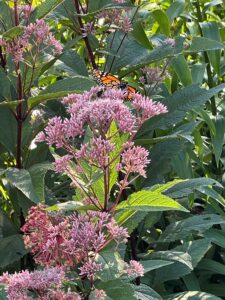March 6, 8:30am to 4:00 pm
Monmouth County Agricultural Building
4000 Kozloski Rd. Freehold , NJ 07728
Registration: $75
(includes coffee, light refreshments in the morning and lunch)
Available Pesticide Credits:
Core – 2 units
2- 3 units
3A- 5 units
3B- 5 units
3C- 1 unit
6B- 3 units
8C- 6 units
8A- 1 unit
9- 3 units
10- 6 units
PP2- 5 units
ProFACT NJ Certified Fertilizer Applicator
2 Credits Available
To register, contact Cathy VanBenschoten at the Rutgers Cooperative Extension of Monmouth County Office
732-431-7260 or email at Catherine.VanBenschoten@co.monmouth.nj.us
Click the link below for the full registration form:
There is no online registration. This event is cash, check or purchase order only.
Make checks payable to: Rutgers, the State University of NJ
Mail to: Cathy VanBenschoten
4000 Kozloski Road
Freehold, NJ 07728
This annual event is brought to you by Rutgers Cooperative Extension of Monmouth, Middlesex, Mercer, Burlington, Ocean & Somerset Counties. Seminar topics will benefit those who work in grounds maintenance including school board members, maintenance supervisors, employees of highways, parks, cemeteries, industrial grounds, lawn & home ground services, garden center operators and nurserymen.
Agenda
8:30 – 9:00 AM Registration/Sign-in
9:00 – 9:30 AM Scouting and Diagnosing Common Disease Problems in Turf and Ornamentals – William Errickson – Monmouth County Agricultural Agent
9:30 – 10:00 AM Innovations in Weed Management – Matthew Elmore Ph.D. – Extension Specialist in Weed Science
10:00 – 11:00 AM Pesticide Safety Regulations and Updates – George Hamilton Ph.D. – Extension Specialist in Pest Management
11:00 – 11:15 AM Break
11:15 – 12:15 PM Managing Invasive Plants – Michele Bakacs – Middlesex County Natural Resources Agent
12:15 – 1:00 PM LUNCH
1:00 – 1:30 PM Mosquito and Tick Problems in New Jersey: Identification, Management, and Protection for Green Industry Professionals – Emily Fontaine and Dina Fonseca Ph.D. – Program Associate and Professor, Chair Dept. of Entomology
1:30- 2:30 pm Sustainable Turfgrass Fertility Management – Bradley Park- Researcher in Turfgrass Management
2:30 – 3:00 PM Invasive Insects & Ecological Balance – Steve Rettke – IPM Program Associate
3:00 PM Course Evaluation, Pesticide Credits

